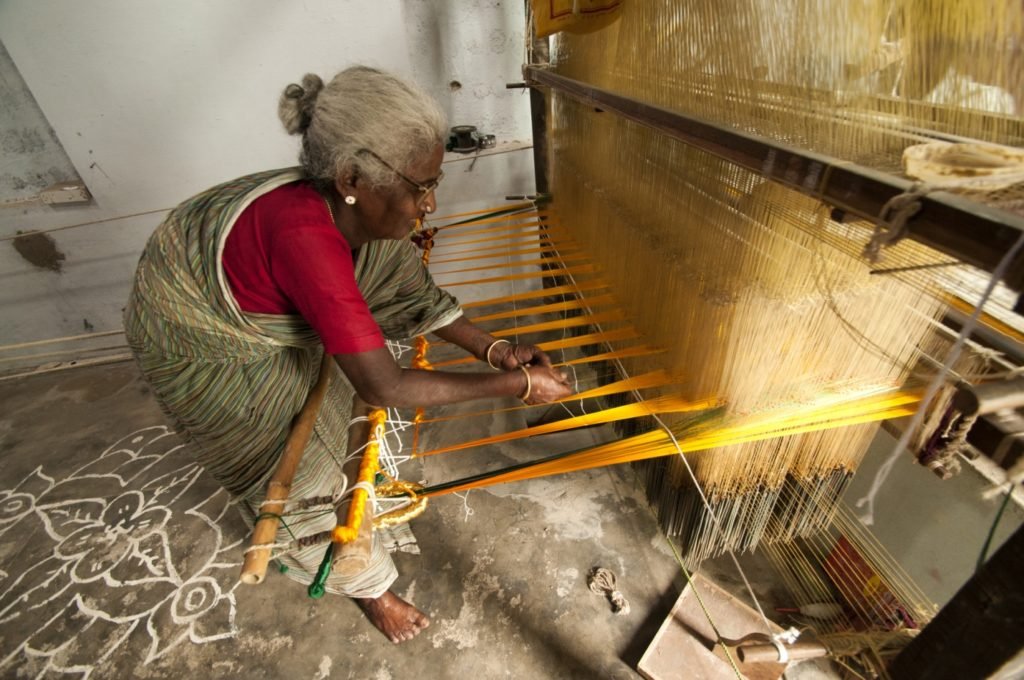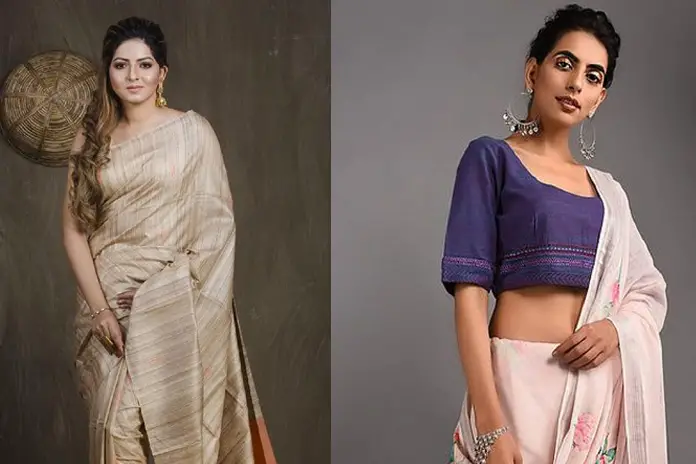When you think of India the first image that you think about is the Indian woman donning the most beautiful and elegant sarees made with the finest fabric. India is home to many natural fibers which produce some of the best fabrics in the world. One of these fabrics is silk and to be specific Tussar silk. Tussar silk is a different kind of silk that is used to make the famous Tussar silk sarees that are a favourite of every Indian woman.
India comes second in the production of Tussar silk and the only producer of Indian tussar silk or tropical Tussar tended to by the tribals living in the eastern part of India. The tribals employed to make the yarn are mostly women who are dedicated and highly skilled in producing the beautiful tussar silk cloth seen in the markets. It takes them three days to produce a 10-meter tussar silk cloth.
Tussar Silk Worms

Tussar silk has a bright, lustrous, soft feel that has the highest wear resistance in the natural fabric. Its short fiber length makes tussar silk very durable and loved by fashion designers. Tussar silk has a rich texture and natural gold colour that makes it a favourite in most Indian women’s household. Though the tussar fabric is traditionally worn as sarees, it can also be worn as kurtas, zardozi skirts, and stoles that also reflect the elegance every woman desires. A special weave produces a coarse texture and a property to refract two different shades of the sale colour.
Tussar silk is made from the natural silk fibers produced by larvae Antheraea Paphia silk moths that are part of the Saturnidsor Emperor moths. These moths have wings that have circular markings that look like a mirror that you can see your reflection. These moths are unlike any other silk worms. They live in the wild forest and they don’t feed on mulberry leaves which are the common silkworm food. The silk that is formed from their oval, single-shelled cocoons is called ‘wild silk’. Boiling is an important part of the manufacturing of the silk as it softens the cocoon which makes it easier to extract the silk.
Origin and History of Tussar Silk

Tussar silk is mainly produced in Bhagalpur, Bihar, and Malda districts in West Bengal. This silk was discovered in medieval times. In Sanskrit, it’s called kosa silk. Desi tussar is produced all over India, but Jharkhand produced the largest amount of tussar silk. Kharsawa district is home to skilled tribal workers who have passed on their craft down to the next generations making them a storehouse of unparalleled skills and knowledge that cannot be replicated. The tussar silk industry relies mainly on tribal and rural labour-mostly women- who are trained in the production of silk. They takeat least three days to make 10-meters of tussar silk cloth and each laborer weaves at around ten silk sarees a month. The rural women labourers are paid less than the town women hired to do the same job.
Why Choose Tussar Silk Sarees?

Tussar silk sarees have put India in the limelight with their elegance and beauty. Their authentic appeal has made them popular with both national and global celebrities who can be seen donning this beautiful sarees at important events. Tussar silk fibers have a golden undertone which makes them special. It has a lot more texture than any other variety of silk. The tussar silk sarees are a lot more porous and lightweight. This makes them breathable which is an ideal quality for fabric that can be worn during the summer seasons in India and in other warmer parts of the world. They come in a variety of colours that gives you a wide range of colours for you to choose from at stylecaret.
Tussar silk sarees can refract light at different angles which makes them the perfect attire to wear to grand occasions or weddings if you want to grab the attention of the crowd. This unique feature makes you stand out as your saree highlights different colours with every move you make. They have a neat draping that isn’t too flashy that you can wear to the office or as ethnic wear.
Tussar silk has in a range of natural colours like cream, honey, beige, and tawny. Tussar silk can easily be blended with wool, linen, cotton, or other silks and dyed to give more vibrant colours. Traditional Bengal tussar sarees come in a wide variety of natural shades of cream or beige with a coloured border and pallav, paisleys and floral motifs woven on the body. Kantha embroidery is also popular with tussar silk fabric where the plain fabric is colourfully weaved with embroidered patterns on the borders and pallav of the saree. Popular contemporary designs that can be found on the tussar silk sarees are the striped or geometric patterns.
The dull golden texture of the tussar silk makes it a suitable base for print motifs inspired by nature and embroideries. Other creative sources of inspiration can be found from floral patterns, leaves, tree shapes, buds, and leaflets.
Maintenance of Tussar silk

Tussar silk doesn’t need a lot of maintaining since it’s not a difficult fabric. However, you need to avoid staining the fabric and also prevent it from losing its luster and sheen. The best way to take care of this fabric is to iron and dry clean it once in three months to ensure that your attire doesn’t lose its freshness.
If you are cleaning your tussar saree at home, let your saree drip and dry don’t wring it. Dry your saree in the shade as exposing it to the sun may cause the colour to fade. When washing, don’t use chemical bleach, use cold water with a mild detergent to maintain the shine and longevity of the fabric.
Conclusion
Tussar silk is a unique fabric that is used to make one of the most sort-after sarees in the world. Its unique features make this fabric a favourite with most Indian women.

Author Name – Shrutika Potwar.
Bio –Shrutika is full time SEO Analyst and on the-side blogger. She has 2 years of experience in IT sector. She is working at https://stylecaret.com a fashion e-commerce portal in India. She loves to write and share about Fashion, Lifestyle and Technology and many more categories in spare time.

